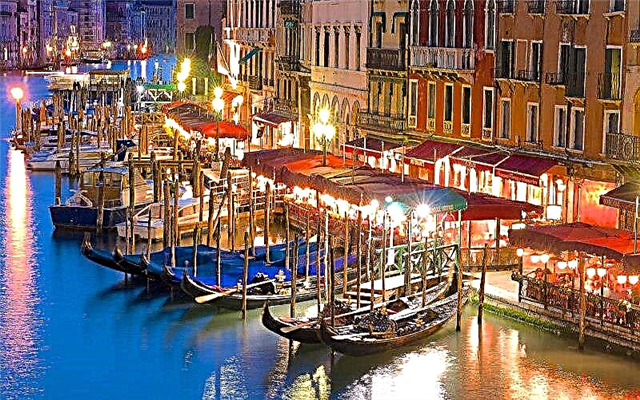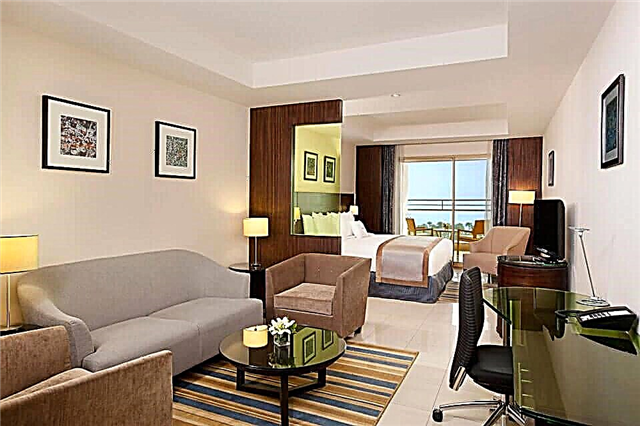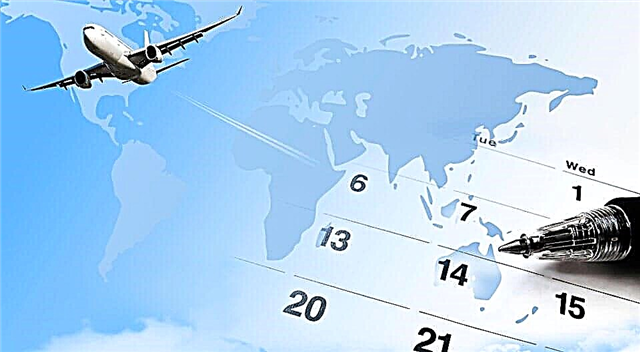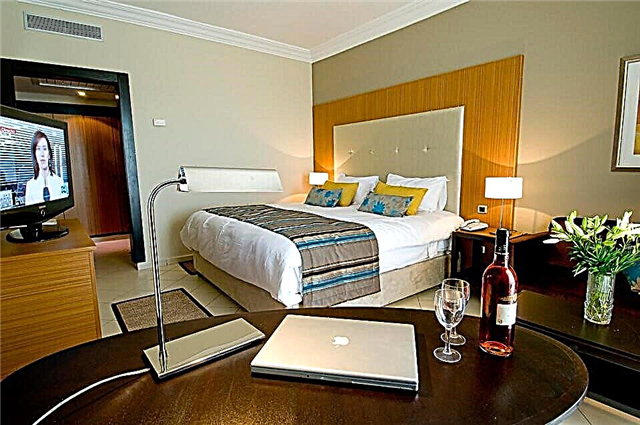Belgrade is sometimes called the “gateway to the Balkans”. Despite the fact that the city has a rather long and interesting history, tourists are unlikely to find pompous palaces, outstanding monuments or world famous museums here. But the lack of external gloss is more than compensated for by the special atmosphere of the city streets and the boundless hospitality of the Serbs.
The main architectural sights of the capital are the Belgrade Fortress and the Church of St. Sava, which cannot be completed in any way. In some parts of the city, traces of the 1999 NATO bombing are clearly visible. Many destroyed walls and houses were deliberately left in such a state that that terrible time would not be erased from the memory of people. Otherwise, Belgrade is a modern and dynamic city with its own charm and character.

The best hotels and hotels at affordable prices.
from 500 rubles / day
What to see and where to go in Belgrade?
The most interesting and beautiful places for walking. Photos and a short description.
Belgrade fortress
The Belgrade fortress was built in the 1st century. Some sources are inclined to believe that the building was built several centuries earlier. Most of the buildings date back to the 18th century, although traces of the Roman and Byzantine eras have been preserved inside the fortification. For such a long time, the fortress was fought for more than 100 times, 44 times it was destroyed and restored. Today, most of the territory is occupied by a landscape park.

Kalemegdan park
A large green oasis in the historic center of Belgrade, surrounding the Belgrade Fortress. It was defeated by order of Prince Milos Obrenovic in 1867, when the territory of the fort came under the control of the city authorities. Previously, this place was used by the Ottoman Turks for military exercises. In Kalemegdan there is a military museum, an art gallery, a zoo, a play area for children, monuments and sports grounds.

Skadarlija
The old city quarter, which is often called the Serbian "Montmartre". Skadarlija is famous for the fact that famous writers and publicists lived and worked here. The Russian poet I. Bunin also once visited this area. The place acquired bohemian fame in the late 19th - early 20th centuries. Today, the quarter has retained its special atmosphere of creativity and freedom, which invariably attracts tourists.

Prince Michael Street
A pedestrian alley in the very heart of Belgrade, where all guests of the city are sure to get. For the capital of Serbia, it has about the same meaning as the Arbat for Moscow. At any time, the street is filled with artists, musicians, actors, souvenir sellers and walking tourists. People dine in restaurants, drop in stores, watch impromptu scenes and just enjoy the pleasant surroundings.

Nikola Tesla Museum
A scientific museum dedicated to the life and work of the outstanding scientist N. Tesla. It was founded in 1952 by the decision of the Yugoslav government. The exposition occupies a two-story mansion on the street. Proletarian brigades. The unique collection contains models of Tesla's inventions, as well as his manuscripts, drawings, letters and some personal belongings. The collection contains several tens of thousands of exhibits.

Aeronautics Museum
The collection was created in the middle of the 20th century on the initiative of a group of enthusiasts who could not imagine their existence without the sky and flights. Since 1989, the museum has been housed in a futuristic building on the territory of the Belgrade airport. Aircraft, aircraft engines, rockets and special equipment are collected here. There is also a department with photographs and books on the subject.

War museum
The museum is located on the territory of the Belgrade Fortress. It contains more than 30 thousand items that belong to different eras: weapons, cards, banners, uniforms, equipment, documents, photographs, personal belongings of soldiers and much more. Interesting exhibits include Austrian cannons, a Katyusha gun and a T-34 tank. The museum appeared in 1878 thanks to the assistance of Prince Milos Obrenovic.

National Museum of Serbia
The National Museum is considered one of the largest in Serbia. Its collection consists of almost 400 thousand exhibits. Ancient Egyptian and Roman artifacts, coins, sculptures, costumes and household items from different eras are kept here. Particularly impressive is the art exposition, which includes works by Matisse, Rubens, Picasso, Rembrandt, Van Gogh and other eminent masters of the 16th-20th centuries.

National Theater
The theater building is one of the most picturesque in Belgrade. It was built in 1869 according to the project of A. Bugarsky in an eclectic manner that combines elements of almost all known architectural trends. The last major renovation took place in 1989. The best actors of the former Yugoslavia and present-day Serbia have performed and are performing on the stage. In the theater, dramatic performances are on a par with opera and ballet.

Temple of Saint Sava
The construction of the cathedral began in 1894 at the very place where, by order of the Ottoman occupation authorities, the relics of the first Serbian archbishop, St. Sava, who lived in the XII-XIII centuries, were burned. Until 1939, only the walls were erected, then the Second World War began. Work continued until the early 2000s with long breaks. Even now, the temple is still incomplete. Nevertheless, he acts and receives parishioners.

St. Mark's Church
Orthodox church located near the parliament building. The church was built in the 1930s in the Serbian-Byzantine style in imitation of the architecture of the Gracanica monastery. Inside are the remains of Stephen IV Dusan, the creator of the Serbian kingdom. St. Mark's Church is famous for its valuable collection of icons from the 13th-19th centuries. Perhaps no other temple in Serbia has such a rich collection of divine images.

Ruzica Church
The temple is dedicated to the Most Holy Theotokos. It is one of the oldest in Serbia, as, according to the surviving manuscripts, it was erected in the 13th century. The building is located right next to the walls of the Belgrade Fortress. It is noteworthy that even during the First World War, Serbian soldiers in the respite between battles tried to restore the badly damaged church, which speaks of the incredible patriotism of this people.

Tito's Mausoleum "House of Flowers"
Broz Tito - General Secretary of the Central Committee of the SKYU, in fact the sole ruler of Yugoslavia until 1980. After his death, interethnic conflicts erupted with renewed vigor, which eventually led to the collapse of the country. Tito's mausoleum is a kind of Lenin's Mausoleum, only the Yugoslav leader rests in a closed sarcophagus. There is also a museum at the tomb, where gifts and personal belongings of the leader are kept.

Palace of Princess Lyubitsa
The castle is located in the center of Belgrade in one of the oldest districts of the city. It was erected in 1830 according to the project of H.N. Zhivkovich. The building is a classic example of 19th century Belgrade urban architecture. It was built for the wife of Prince Obrenovich, Princess Lyubitsa and their sons. At various times, the palace housed a lyceum, a gymnasium, a court, a boarding school and even a church museum. In 1979 the castle was recognized as a cultural monument.

Parliament building of Serbia
The monumental palace in the classical style was erected in 1936 according to the project of J. Ilkich and K. Jovanovic. At the final stage of construction in 1934, the chief architect of Yalta, N.P. Krasnov, joined the work on the interior. For a long time, the government of Yugoslavia sat in the building, since 2006 it has been occupied by the Parliament of Serbia. The building is of great historical and cultural importance and is considered a valuable monument.

Gardosh Tower
A memorial structure erected at the end of the 19th century in honor of the millennium anniversary of the formation of the first Hungarian settlements. The construction of the tower was financed by the Austro-Hungarian authorities. The height of the structure is 36 meters, which made it possible to use it as an observation tower and respond in time to a fire that has arisen. There is a free observation deck on the upper floors of Gardos.

Aval TV tower
A TV tower on Mount Avala, which was destroyed in 1999 during NATO's operation "Allied Force" and was restored only in 2010. It is this fact that causes an increased interest of tourists to the sights. The building is considered the tallest in the Balkans. Mount Avala rises 500 meters above Belgrade and its surroundings. It is a popular holiday destination for residents of the capital and the suburbs.

Belgrade Zoo
The city zoo is located in close proximity to the walls of the Belgrade Fortress. During the bombing of the Second World War, many animals died, some escaped and hid in the streets of the city. Since then, employees have been practicing the most humane treatment of four-legged animals. The most comfortable conditions have been created for the animals. Some animals even walk quietly among the visitors.

Ada Tsiganliya
The peninsula, located on the outskirts of Belgrade, is a popular recreation area with a lake and pebble beach. Here you can not only swim and sunbathe. Citizens come here for a picnic, play sports, dine in a cafe or chat with friends. The peninsula is inhabited by deer, hares, pheasants and ducks, which are periodically shown to people. You need to come here for at least one day to fully enjoy the local nature.

Danube and Sava rivers
The capital of Serbia is located at the confluence of the Sava and Danube rivers. Rough waters converge where the Pannonian Lowland merges into the Balkan Peninsula. It is a wide bend with picturesque shores, in the middle of which there is an island overgrown with lush vegetation. Pleasure boats often run here. The meeting point of the two waterways is clearly visible from the territory of the Belgrade Fortress.












